
Ready to Accelerate Your Portfolio?
The Investing News Network (INN) spoke with analysts, market watchers and insiders about which trends will impact the EV sector.
| ✓ Trends | ✓ Forecasts | ✓ Top Stocks |
Table of Contents:
|
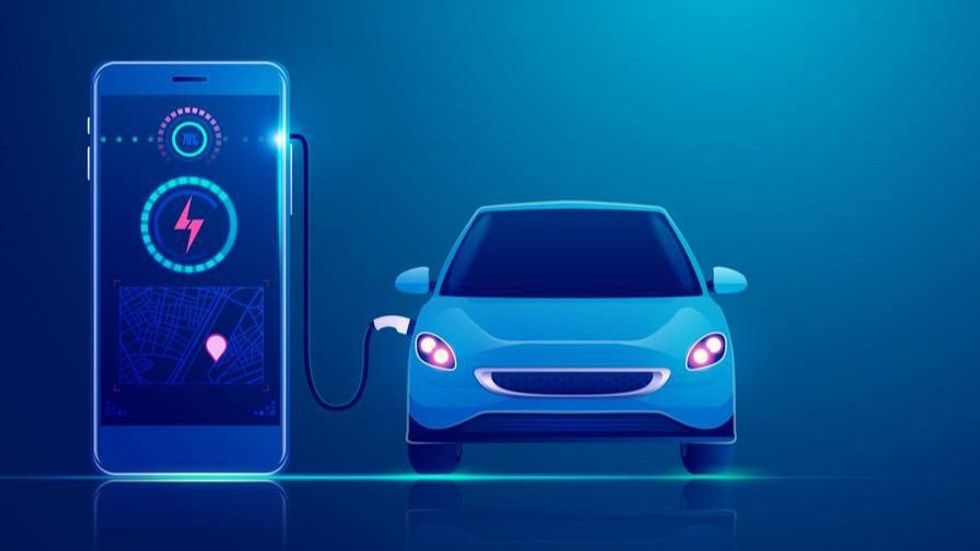 |
Who We Are
The Investing News Network is a growing network of authoritative publications delivering independent, unbiased news and education for investors. We deliver knowledgeable, carefully curated coverage of a variety of markets including gold, cannabis, biotech and many others. This means you read nothing but the best from the entire world of investing advice, and never have to waste your valuable time doing hours, days or weeks of research yourself.
At the same time, not a single word of the content we choose for you is paid for by any company or investment advisor: We choose our content based solely on its informational and educational value to you, the investor.
So if you are looking for a way to diversify your portfolio amidst political and financial instability, this is the place to start. Right now.
EV Outlook 2024
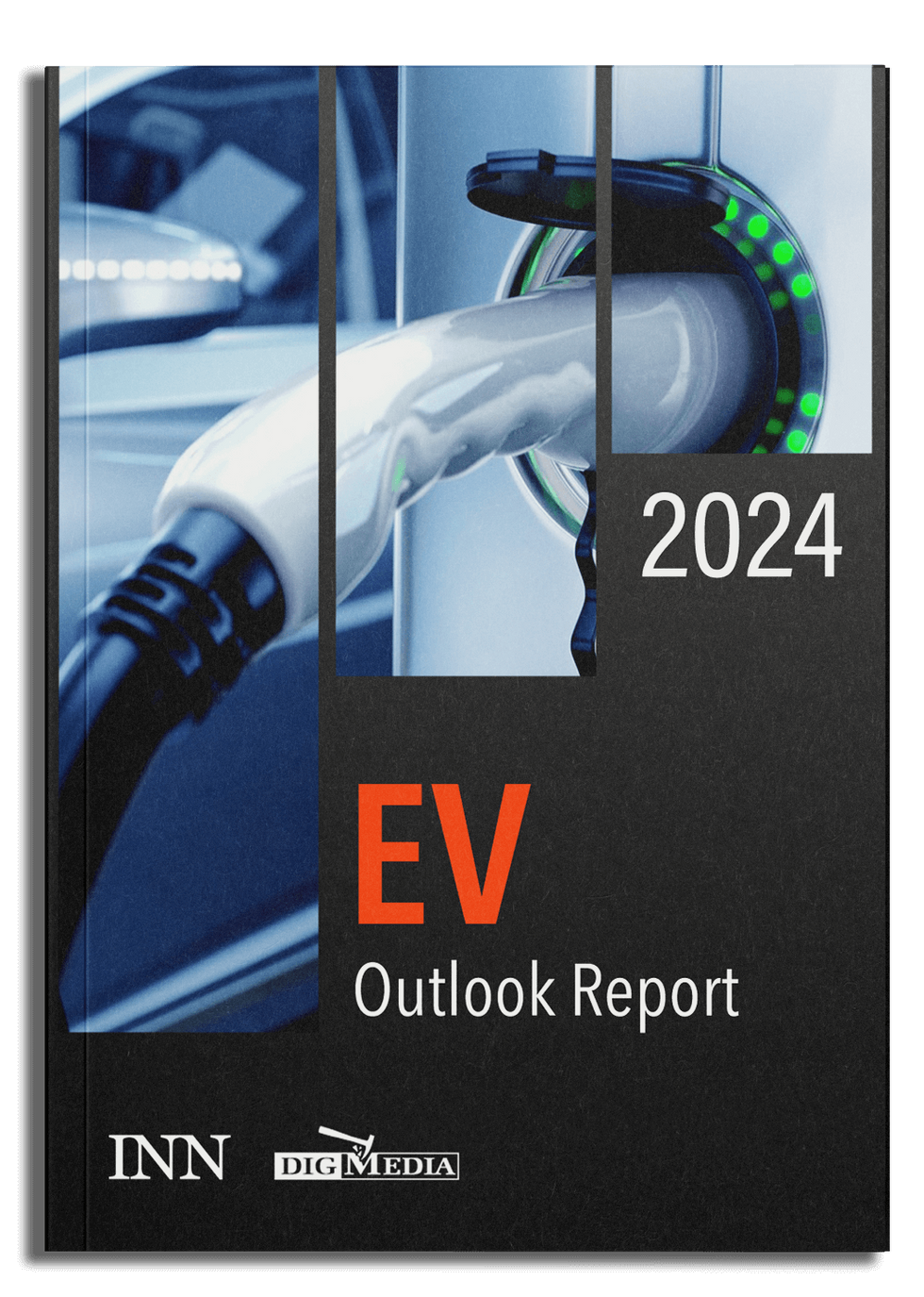
Table of Contents
EV Market Update: H1 2023 in Review
EV Market Forecast: Top Trends That Will Affect EVs in 2024
Top 10 Electric Vehicle Stocks to Watch
Electric Vehicle Market Update: H1 2023 in Review
The electric vehicle (EV) revolution has been top of mind for battery metals investors for quite some time now, as increasing EV sales mean more demand for essential elements such as lithium and cobalt.
Despite a volatile 2022, the EV market remained in the spotlight, finishing the year strong as many had predicted. More than seven months in, 2023 is shaping up to be another strong year.
Given the importance of the EV narrative for battery metals and all the commodities associated with the EV supply chain, the Investing News Network (INN) reached out to experts to ask for their thoughts on the EV outlook. Here's what they said.
How did the EV market perform in 2023?
Last year, sales of EVs exceeded 10 million units. China remained the main market in 2022, accounting for around 60 percent of global electric car sales, followed by Europe and the US.
The International Energy Agency (IEA) is expecting new purchases to accelerate in the second half of this year, ultimately hitting a total of 14 million by the end of 2023. The agency expects that around 18 percent of all cars sold worldwide in 2023 will be electric — up from only 2.5 percent in 2019.
“The increase in demand for electric vehicles is driving demand for batteries and related critical minerals,” the IEA states in its global EV outlook for this year. Last year, EV batteries accounted for 60 percent, 30 percent and 10 percent of lithium, cobalt and nickel demand, respectively; that's a massive increase from 2017, when the figures were around 15 percent, 10 percent and 2 percent.
Looking at the first half of the year, Rho Motion data shows that there were 5.8 million sales of passenger car and light-duty vehicle EVs during the period. As for which companies sold the most, China’s BYD (OTC Pink:BYDDF,SZSE:002594) took the top spot, with sales almost doubling in H1 of this year compared to H1 2022.
“BYD also now exports their vehicles in bulk to Europe and other Asian countries,” Charles Lester of Rho Motion told INN. “In order to combat China's sales abroad, some countries are planning to incentivize local production.”
Tesla (NASDAQ:TSLA) has sold the second most EVs in 2023 year-to-date, with around a 60 percent increase in sales year-on-year.
Speaking with INN about the main trends seen in the first half of 2023, Lester said a key development in the space so far has been new Environmental Protection Agency (EPA) emission standards in the US.
“The EPA has modeled penetration rates of light-duty cars/trucks and medium-duty vans/pickups in order to meet the new rules,” he said. “The new proposal set out by the EPA shows an ambitious pathway for the US to reduce its greenhouse gas emissions.”
Lester further explained that the proposed CO2 emission standards across the different vehicle classes will require OEMs to significantly increase zero-emission vehicle production in the coming years. This move will require substantial investment from many parts of the EV, battery and charging supply chains.
“The proposed CO2 emission target for light-duty vehicles sees a 56 percent reduction from the 2026 target,” he said.
According to EPA estimates, up to 67 percent of new light-duty vehicles sold in 2032 may have to be electric in order for carmakers to be compliant.
Another major trend in the EV space in the first six months of the year has been the price war in China that began with Tesla’s price cut in January 2023. As of April, around 30 OEMs have joined this price war through either direct price cuts or by distributing sales coupons, according to Rho Motion.
“Although the national subsidy scheme for new energy vehicles (NEVs) was terminated in December 2022, regional subsidies are still available for consumers purchasing vehicles, including NEVs,” Lester said. “This year, falling battery raw material costs have provided headroom for OEMs to lower vehicle prices. OEMs are also trying to decrease inventory.”
What factors will move the EV market in 2023?
While some supply chain constraints still exist, light-duty EV sales set a new record of 10.4 million units in 2022, a 66 percent year-on-year increase. In 2023, S&P Global Commodity Insights forecasts that EV sales will reach 13.8 million, rising to over 30 million by 2030.
“The acceleration in EV sales is gradually being reflected in car fleets across the globe but at a much slower pace, mainly due to production struggles over the last couple of years and consequently low replacement rates,” ING analysts said in a recent note.
Rho Motion also expects to see stronger sales in H2, and is predicting global sales of 13.5 million to 14 million.
China will continue to be a market to keep an eye on in the second half of the year. On July 1, the country's China 6b emission standards officially took effect.
“The new regulation is set to be tighter than Euro 6 emission standards, especially for NOx,” Lester said. “Although the government has granted a six month buffer period to sell inventory, OEMs are motivated to sell the outdated models at discount prices.”
Another factor in the Chinese market that Lester is keeping an eye on is the country's "continued promotion of NEVs in rural areas." Moreover, price cuts for internal combustion engine vehicles will eventually have an impact on NEV sales, Lester added.
Looking even further ahead, S&P Global Mobility forecasts that the EV landscape will increasingly be filled by the top automakers. The firm expects them to account for more than 70 percent of global EV production by the year 2030, compared to 10 percent in 2022.
“But despite the rapidly growing choices EV consumers have, and the unprecedented loyalty rates among EV return buyers, the industry as a whole still needs to tackle consumers' range anxiety, particular for those without a garage or those traveling long distances,” analysts at the firm said.
Don’t forget to follow us @INN_Resource for real-time news updates!
Securities Disclosure: I, Priscila Barrera, hold no direct investment interest in any company mentioned in this article.
Editorial Disclosure: The Investing News Network does not guarantee the accuracy or thoroughness of the information reported in the interviews it conducts. The opinions expressed in these interviews do not reflect the opinions of the Investing News Network and do not constitute investment advice. All readers are encouraged to perform their own due diligence.
Additional information on Battery Metals stock investing — FREE
Electric Vehicle Market Forecast: Top Trends that Will Affect Electric Vehicles in 2024
Electric vehicles (EVs) are the main driver of demand for battery metals such as lithium and cobalt, and investors with an interest in these commodities are understandably keeping a close eye on EV sales.
While EVs are seen as a key part of the energy transition, sales growth is showing signs of slowing as adoption hits bottlenecks in major markets. The early adopters are already on the road, now the sector must do more to encourage average consumers who are still kicking the tires on getting behind the wheel.
With those factors at play, what are the key EV trends to watch? Here the Investing News Network (INN) takes a look at what moved the market in 2023, as well as what’s on the horizon for the EV sector in 2024.
How did the EV market perform in 2023?
Global EV sales grew by 31 percent in 2023 to reach 13.6 million units for the year, as per Rho Motion.
Those figures are nearly in line with BloombergNEF estimates that peg global passenger EV sales at 14 million in 2023. The firm's research breaks down global sales by region to 8.1 million EVs sold in China, 3.3 million in Europe and 1.6 million in North America, with the US accounting for 1.4 million of that figure.
2023 was the first year EV sales in the US surpassed 1 million, growing by 47 percent compared to 2022. Data analytics firm Atlas Public Policy has highlighted that EV sales represented a record 9 percent of all new car sales in the nation for the year, up from 7.3 percent in 2022. Nonetheless, these positive growth figures don’t show the whole story for the EV market in 2023. As noted by Rho Motion, the 31 percent growth figure for worldwide EV sales in 2023 is down by nearly half of the 60 percent growth in sales experienced in the previous year.
Investors watching the EV market over the past year are likely familiar with headlines bemoaning EVs piling up at dealership lots, automakers selling their EV inventory at a loss and rental car companies such as Hertz (NASDAQ:HTZ) paring down alternative fuel vehicles from their fleets — all signals that demand has fallen off of expectations.
"EVs are getting harder to move," Ivan Drury, Edmunds' director of insights, told ABC News. "Earlier in the year they were still going for above MSRP (manufacturer’s suggested retail price). Once the average interest rate hit 7% EVs began to linger on the lot and now require a lot more work from automakers and dealers to sell."
Another concerning trend in 2023 was major automakers announcing cuts to their EV production.
Volkswagen (OTC Pink:VLKAF,FWB:VOW) said it is curbing EV production at two of its Germany-based plants and shelved plans to build an additional US$2 billion EV factory due to declining European demand. Meanwhile, GM (NYSE:GM) scrapped its target to produce 400,000 EVs by mid-2024, and has delayed electric pickup truck production at its Detroit factory by one year in response to slower EV demand in the US.
Most recently, Ford (NYSE:F) attributed a 50 percent cut to 2024 production for its EV pickup truck offering, the F-150 Lightning, to “changing market demand” and an underdeveloped charging network.
Amid those challenges, EV buyers have benefited from lower price points and tax credits that have helped lower the cost of ownership — a sticking point for many potential purchasers.
“Tesla (NASDAQ:TSLA), the current EV market leader, dropped the prices for its popular vehicles multiple times throughout the year. This forced other automakers to try to keep up. Car companies are also now offering greater incentives on their electric models, and dealers are discounting more deeply as EV supply builds up at dealerships,” notes the Associated Press in a November 2023 article.
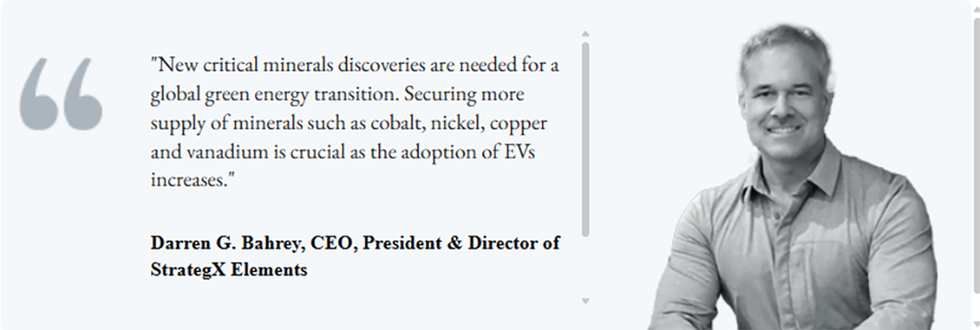
What's holding back EV demand?
The reasons for the drop in EV enthusiasm are multifaceted, but a November 2023 S&P Global Mobility survey provides some insight. When asked about their openness to purchase an EV back in 2021, 86 percent of consumers in key global auto markets gave the thumbs up. That figure sank to 71 percent in 2022 and fell further in 2023 to 67 percent.
Only 42 percent of the 7,500 respondents surveyed said their next vehicle would be electric, while 62 percent agreed with the statement, "I am waiting until vehicle technology improves before purchasing a new car."
The lack of charging infrastructure and the ensuing range anxiety is an oft-cited reason for consumer hesitancy when it comes to purchasing a new EV. Indeed, the time required for charging was a major concern of 46 percent of respondents, with 44 percent reporting concerns about charging station availability.
Range anxiety aside, the biggest hurdle for wider consumer adoption of EVs appears to be cost, according to the survey. Nearly half, or 48 percent, of respondents see prices for EVs as unaffordable. New EVs tend to cost more than their gas-powered counterparts, and today's high interest rate environment is likely hurting buyers' ability to finance.
“What's more, this is not just a US-market phenomenon. It's affecting consumers worldwide — even in regions where EVs have made significant market inroads,” explained researchers at S&P Global Mobility.
It would seem that the EV market has moved beyond the early adopter stage and will now have to court a new type of consumer for which affordability and practicality are top of mind.
“Automakers will have to engineer more entry-level models to reach a less affluent demographic and target buyers with vehicles that specifically replace their combustion counterparts,” explained Forbes auto industry expert Michael Harley.
What’s the outlook for the EV market in 2024?
Double-digit sales growth is still on the table for EVs in 2024. Nevertheless, experts' projections for the year ahead underline expectations that growth will continue to slow.
BloombergNEF is estimating that global EV sales will hit 16.7 million units this year, a 21 percent increase over 2023.
“The 2024 forecast marks a slowdown in annual growth rates caused by the regulatory schedule in Europe, market saturation in China, US consumers facing high interest rates, slow embrace of EVs by the Big Three automakers in the US and Tesla failing to refresh its model lineup,” wrote Aleksandra O’Donovan, BloombergNEF’s head of EVs.
Looking specifically at the North American market, the firm sees EV sales rising 32 percent to a total of 1.9 million units sold in the US and 230,000 in Canada this year. “The US result will be supported by the EV tax credit being available at the point of sale from 2024. Yet, for the total to be reached, the Big Three automakers — GM, Ford and Stellantis — need to step up their efforts,” added O’Donovan in the January 2024 report.
Rho Motion’s 2024 EV sales outlook is a bit more optimistic, projecting growth of between 25 and 30 percent.
“The pace of growth is slowing, but that’s what’s expected in growing markets like this,” said the firm's data manager, Charles Lester, emphasizing that the change is natural. “You can’t double every year.”
While slower growth in the global EV market may be concerning to investors, BloombergNEF says catalysts are on the horizon that bode well for the industry. These include improving battery technologies that offer faster charging and longer ranges, such as the solid-state batteries Toyota (NYSE:TM,TSE:7203) is actively working to produce by 2028.
Moreover, the costs of EV ownership are coming down slowly by surely, while at the same time the number of accessible public charging stations is increasing. O’Donovan said BloombergNEF expects that “(a)ll of those trends will continue paving the way for further growth in 2025 and 2026, when a slew of cheaper models is set to hit Western markets.”
Investor takeaway
The long road to decarbonization will understandably be fraught with hazards and roadblocks, and the EV revolution will have to drive the same path as any disruptive technology before it.
While EV adoption rates are showing signs of slowing down, this is an expected stage in the transition from gas-powered cars to EVs — one exacerbated by the high interest rate environment.
In 2024, the EV market is on the verge of an inflection point as the industry looks to overcome challenges to widening consumer adoption. And while challenges lie ahead, the market retains a strong case for investment given that EV sales are still projected to grow between a healthy 20 and 30 percent this year.
Don’t forget to follow us @INN_Technology for real-time news updates!
Securities Disclosure: I, Melissa Pistilli, hold no direct investment interest in any company mentioned in this article.
Editorial Disclosure: StrategX Elements is a client of the Investing News Network. This article is not paid-for content.
The Investing News Network does not guarantee the accuracy or thoroughness of the information reported in the interviews it conducts. The opinions expressed in these interviews do not reflect the opinions of the Investing News Network and do not constitute investment advice. All readers are encouraged to perform their own due diligence.
Additional information on Battery Metals stock investing — FREEElectric Vehicle Stocks: 10 Biggest Companies in 2024
The energy revolution is here to stay, and electric vehicles (EVs) have become part of the mainstream narrative.
The shift toward green energy is gathering momentum, with the US and Europe adding more incentives to accelerate this transition. Increasing EV sales are good news for battery metals investors, as EVs are the main price driver for commodities such as lithium and cobalt — key components in the cathodes of EV batteries.
For investors interested in getting exposure to the EV trend, the Investing News Network has gathered a list of the largest EV makers by market cap. This list was generated using TradingView's stock screener on February 13, 2024, and it includes companies with an EV focus under the motor vehicles industry filter. Read on to learn about the batteries and battery suppliers they're using for their current and upcoming models.
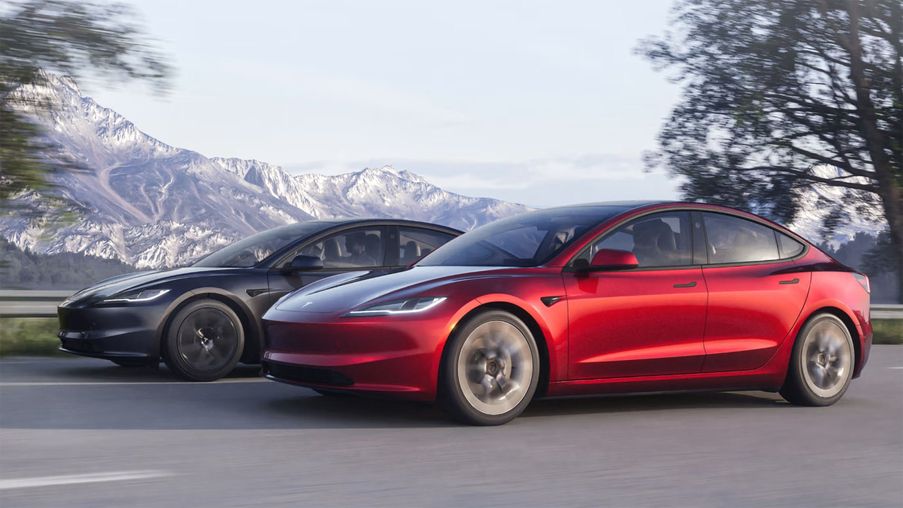
Image via Tesla.
1. Tesla (NASDAQ:TSLA)
Market cap: US$584.69 billion; current share price: US$183.59
First on the list is of course EV maker Tesla, which has brought significant attention to the EV narrative. The company's story starts in 2003, when it was founded by Martin Eberhard and Marc Tarpenning. Elon Musk invested in the company in 2004, becoming the largest shareholder, and eventually became its CEO in 2008.
A well-known story for battery metals investors, the company made headlines in 2014 when it broke ground at its first gigafactory in Nevada ― an unthinkable proposition at the time. In partnership with Panasonic (TSE:6752,OTC Pink:PCRFF), the manufacturing facility has produced batteries with nickel-cobalt-aluminum (NCA) cathodes — different from most of Tesla’s competitors, which use a nickel-cobalt-manganese (NCM) mix.
More recently, Tesla has opened a gigafactory in China, where it joined forces with China’s largest battery maker, CATL (SZSE:300750), to develop batteries for its Model 3. South Korea's LG Energy Solutions (KRX:373220) is also working on supplying Tesla with batteries using nickel-manganese-cobalt-aluminum (NMCA) cathodes.
Tesla said in 2021 that it was changing the battery chemistry for its standard-range vehicles to lithium-iron-phosphate (LFP) cathodes, which are cobalt- and nickel-free.
Tesla's prime EV position has taken a hit in the early months of 2024 on disappointing Q4 2023 revenue and a higher-for-longer inflation outlook. However, the company is still the largest EV maker by market cap by far.
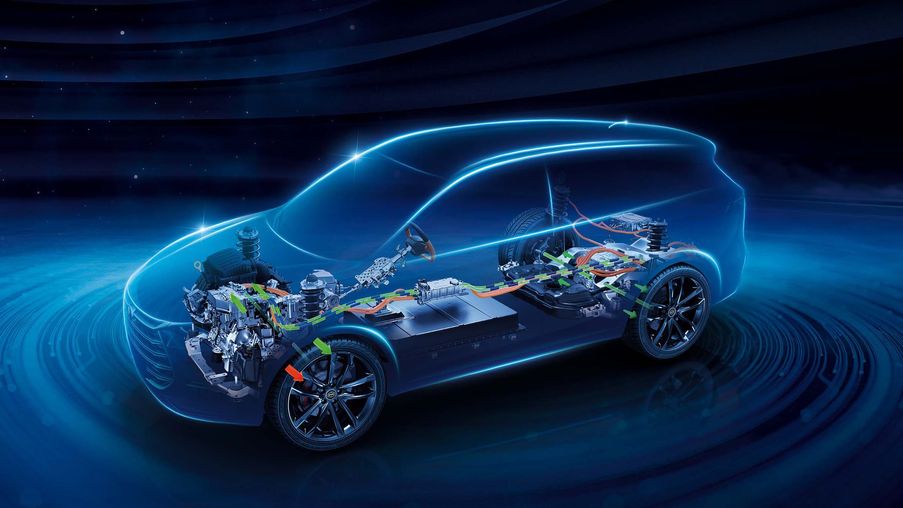
Image via BYD.
2. BYD (HKEX:1211)
Market cap: US$71.19 billion; current share price: US$25.19
Leading Chinese EV maker BYD was founded in 1995, and in the fourth quarter of 2023 it passed Tesla in terms of global EV sales. BYD sold 526,409 EVs compared to Tesla's 484,507 units sold during the quarter.
BYD is also the leading producer of multiple kinds of rechargeable batteries: nickel-metal hydride batteries, lithium-ion batteries and NCM batteries. BYD owns the complete supply chain layout, from mineral battery cells to battery packs.
Backed by Warren Buffet, in 2020 BYD officially launched its Blade battery, a less bulky LFP battery. The following year, the company announced that it was starting to use LFP batteries for all of its pure electric models.
As of mid-2022, BYD was supplying Tesla with its Blade battery, which is being used for Model Ys built in Germany. In 2023, the company began working on using sodium-ion batteries — this battery type is expected to be seen in 9 percent of global EV sales by 2033, according to information from Fastmarkets.
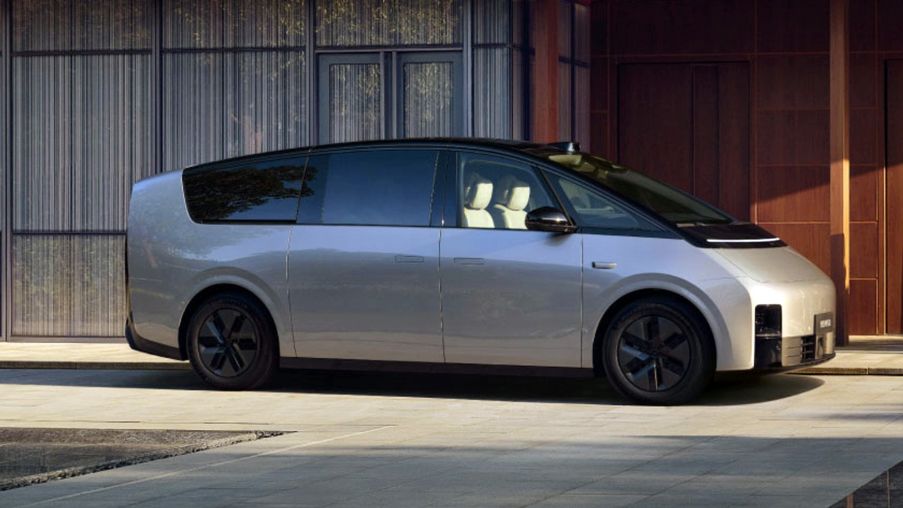
Image via Li Auto.
3. Li Auto (NASDAQ:LI)
Market cap: US$29.82 billion; current share price: US$29.76
Li Auto bills itself as a pioneer in successfully commercializing extended-range EVs in China, and is a leader in China's full-size and large SUV markets. The company started volume production of its first model, Li ONE, in November 2019, and launched its initial public offering in July 2020, raising US$1.1 billion.
One of the main differences between Li Auto and the other companies on this list is that Li Auto's models allow battery pack charging with electricity or gas. Li Auto calls this design extended-range EV technology. By 2025, the company wants its lineup to include one flagship model, five extended-range electric models and five high-voltage pure electric models.
Li Auto has battery supply agreements with CATL, and announced in February 2023 that it had been selected to work with Sunwoda Electronic (SZSE:300207) and Svolt Energy Technology.
In 2023, the company surpassed its 300,000 unit sales target to customers in Mainland China for the year by 76,030 additional EVs, representing a 182 percent year-on-year increase.
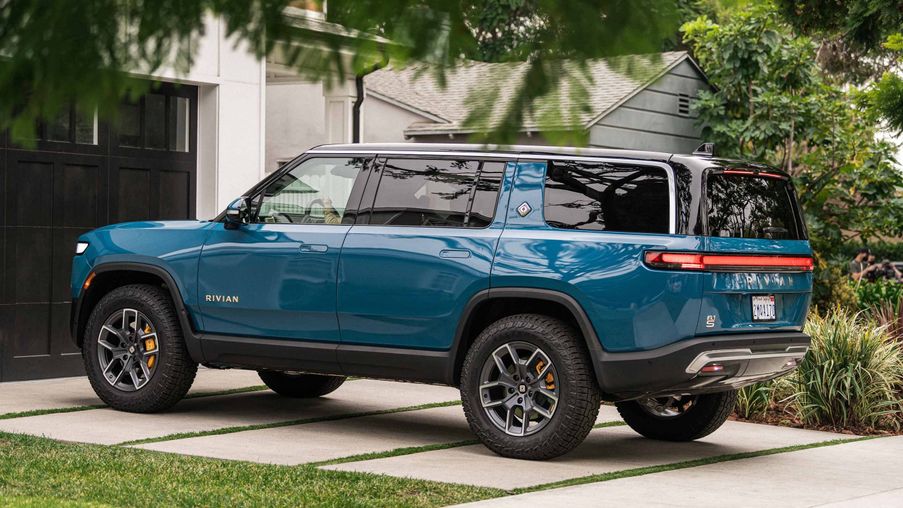
Image via Rivian.
4. Rivian (NASDAQ:RIVN)
Market cap: US$14.63 billion; current share price: US$15.27
Founded in 2009, Rivian designs, develops and manufactures category-defining EVs and accessories and sells them directly to customers in the consumer and commercial markets.
Rivian, which is majority owned by Amazon (NASDAQ:AMZN) and is also backed by Ford (NYSE:F), went public in 2021. The carmaker announced plans to use cells made with LFP chemistries for its standard-level vehicles in 2022, and in 2023 announced it plans to switch its entire lineup to this type of battery. South Korea’s Samsung SDI (KRX:006400) is Rivian’s current battery supplier, but the company has plans to build its own battery cells in the future.
For 2023, Rivian's EV production came in at 50,000 vehicles. While that's about double the previous year’s production, the figure was below many analysts' expectations of around 60,000.
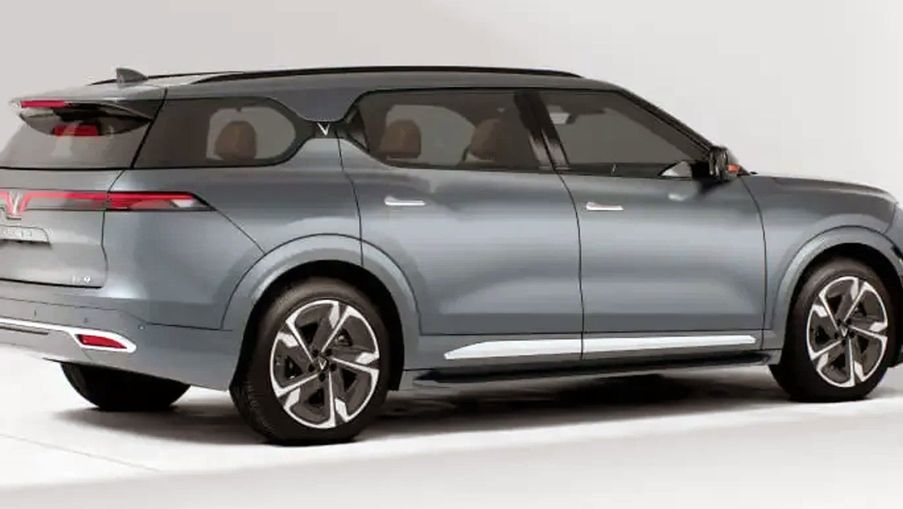
Image via VinFast.
5. Vinfast Auto (NASDAQ:VFS)
Market cap: US$11.97 billion; current share price: US$5.13
VinFast Auto, Vietnam's first global automotive manufacturer, is a multinational EV manufacturer producing both affordable and luxury EVs. The company even has an electric pickup truck in the works, known as the VF Wild.
VinFast Auto is working to expand its reach into key markets in North America and Asia. It has various showrooms and service centers in North America, including in the Canadian provinces of Ontario, BC and Quebec, and in the US states of North Carolina, New York, Texas and Kansas. Later this year, the company plans to open an EV business network in the Philippines. In addition to those efforts, VinFast is building a US$2 billion EV manufacturing complex in North Carolina and has plans to build more factories in Indonesia and India.
Like many of its peers, VinFast Auto experienced decreased EV deliveries in 2023. Vehicle deliveries did pick up in Q4, however, “amid economic headwinds, slow EV adoption rate in certain regions has adversely affected the deliveries plan,” said Tran Mai Hoa, deputy CEO of sales and marketing at VinFast Global.
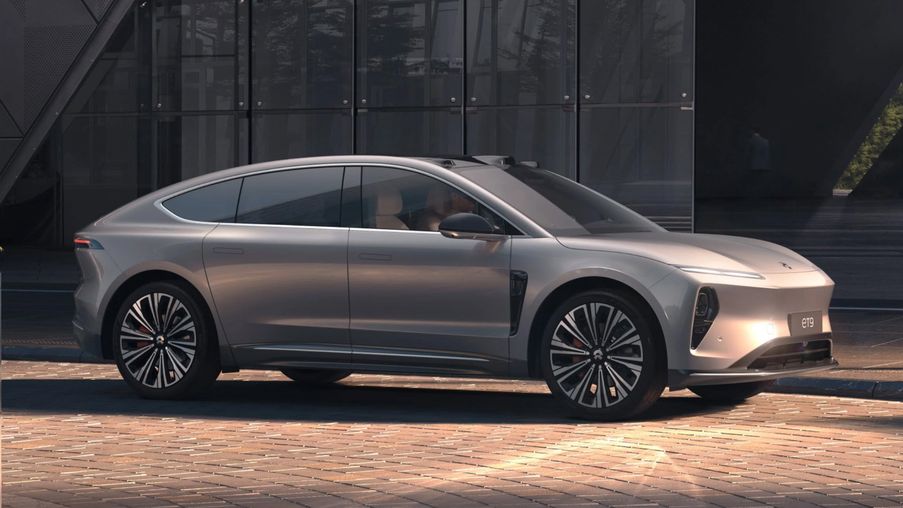
Image via NIO.
6. NIO (NYSE:NIO)
Market cap: US$8.94 billion; current share price: US$5.69
Founded in 2014, Chinese EV maker Nio designs, jointly manufactures and sells smart and connected premium EVs.
Nio’s strategy includes its battery-as-a-service endeavor, a subscription purchasing model where buyers lease vehicle batteries. The company says the idea behind this move is to reduce vehicle costs. The service is run by a battery asset company, with Nio and leading battery maker CATL owning a stake. CATL is already Nio’s sole battery supplier.
In September 2021, the company introduced a standard-range hybrid-cell battery that combines NCM and LFP cells. Looking ahead, the carmaker is said to have plans to use a combination of self-produced and externally sourced batteries in the long run. Nio is also gearing up to offer the world’s longest-range solid-state battery on a rental basis.
This year, the company is planning to launch a more affordable EV brand known as Alps, with the first of three new models designed to compete against Tesla's Model Y.
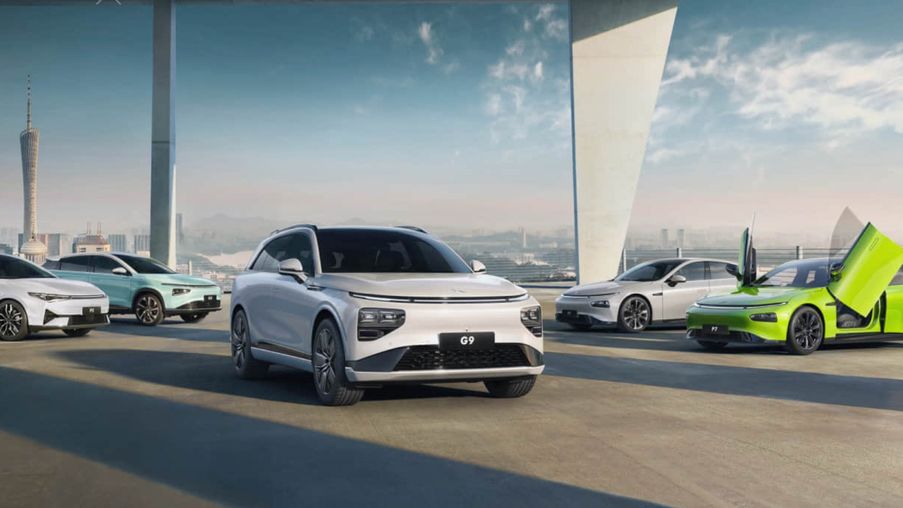
Image via Xpeng.
7. XPeng (NYSE:XPEV)
Market cap: US$7.75 billion; current share price: US$8.54
Another Chinese EV maker focused on the smart EV market, Xpeng’s main manufacturing plant is in Guangdong province.
CATL used to be XPeng’s primary battery supplier, but the carmaker has diversified its battery suppliers. The carmaker has chosen to work with Sunwoda, a smaller Chinese battery maker, to develop a fast-charging battery for the G9. XPeng also counts CALB (HKEX:3931) and EVE Energy (SZSE:300014) as battery suppliers. Early in 2021, XPeng launched three new vehicle versions powered by LFP batteries for the Chinese market. Its long-range versions use NCM batteries.
Early this year at the El Prix 2024 Motor EV Winter Test, XPeng's G9 achieved the top spot in charging time and fifth in the range test, demonstrating its strong performance in cold winter weather conditions.
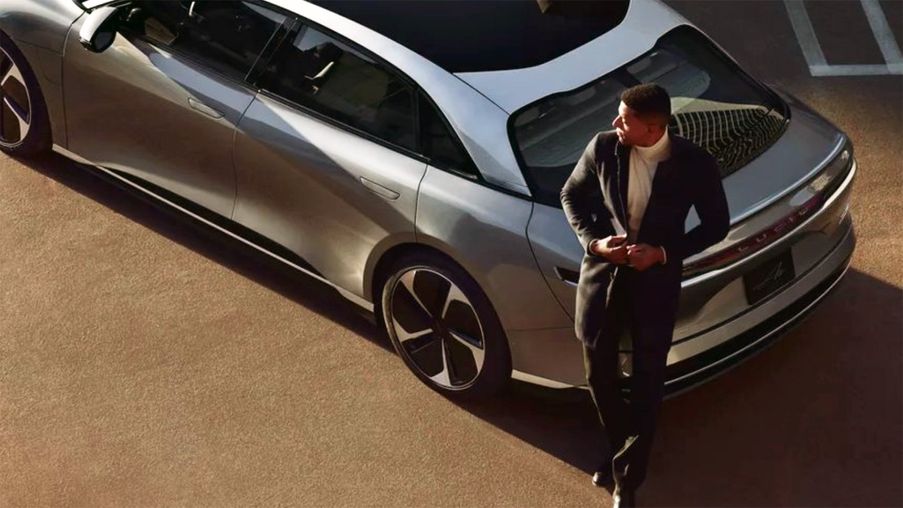
Image via Lucid.
8. Lucid (NASDAQ:LCID)
Market cap: US$7.601 billion; current share price: US$3.32
Headquartered in California, Lucid was founded in 2007 and produces luxury electric cars. The company's first car, Lucid Air, is a state-of-the-art luxury sedan that is being produced at its factory in Casa Grande, Arizona.
Lucid will use Panasonic batteries in its long-range Lucid Air and its Gravity SUV, which will begin production in 2024, although details of the chemistry used are yet to be known. Previously, Lucid had an agreement with LG Chem (OTC Pink:LGCLF,KRX:003550), which supplied cylindrical batteries for the US EV maker's standard Lucid Air models starting in the second half of 2020 and extending until 2023.
Lucid’s sales slipped in 2023, with only 4,369 sales out of 7,800 units built as EV sales slowed globally. In response, this year the company is cutting prices by 6 to 9 percent for three trims: Air Pure, Air Touring and Grand Touring.
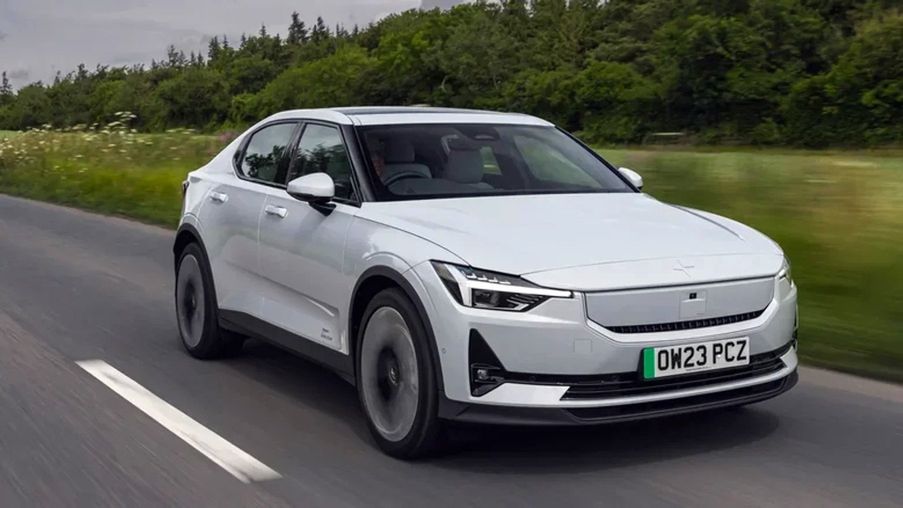
Image via SlashGear.
9. Polestar (NASDAQ:PSNY)
Market cap: US$3.67 billion; current share price: US$1.66
Sweden-based electric performance car brand Polestar is owned by Volvo Cars and Zhejiang Geely Holding (OTC Pink:GELYF,HKEX:0175). However, earlier this year, Volvo announced that it will soon hand Polestar entirely over to Geely to operate as an independent brand. The move is attributed to slowing global demand for EVs.
Polestar had a rough year in 2023, including software challenges that caused delays in the rollout of the Polestar 3. Despite a sales goal of 80,000 units of its Polestar 2 for 2023, the total at the end of year fell short at 54,600 units.
Now that it must compete in a tighter market, Polestar has joined the ranks of those EV makers offering discounted prices, including on the 2024 Polestar 2 rear-wheel and all-wheel-drive models.
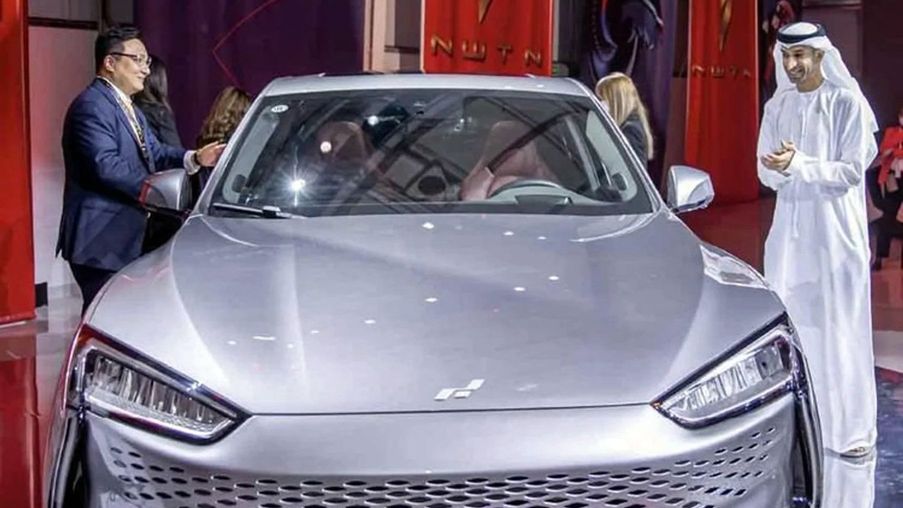
Image via Gulf News.
10. NWTN (NASDAQ:NWTN)
Market cap: US$1.91 billion; current share price: US$6.69
Headquartered in Dubai, United Arab Emirates (UAE), NWTN is focused on providing solutions for green energy and transportation. The company’s smart EVs are integrated with internet of things connectivity, as well as artificial intelligence and autonomous driving technology. NWTN is the first UAE-based EV company to be listed on the Nasdaq.
NWTN’s first new energy vehicle, the Rabdan One, carries the official “Made in the Emirates” designation. Last year, the company launched the Rabdan Muse, a luxury smart passenger vehicle model, in Pebble Beach, California. The vehicles are built on NWTN’s Gravity Zero Platform, which “reduces vehicle material costs via scales of volume, shortens vehicle development time by up to 50 (percent), reduces vehicle development cost by up to 75 (percent) and enhances vehicle product quality considerably for all derived vehicles from the platforms."
This is an updated version of an article first published by the Investing News Network in 2020.
Don’t forget to follow us @INN_Resource for real-time updates!
Securities Disclosure: I, Melissa Pistilli, hold no direct investment interest in any company mentioned in this article.
https://ift.tt/o3Bk4lh









_300xx250.jpg)
0 댓글